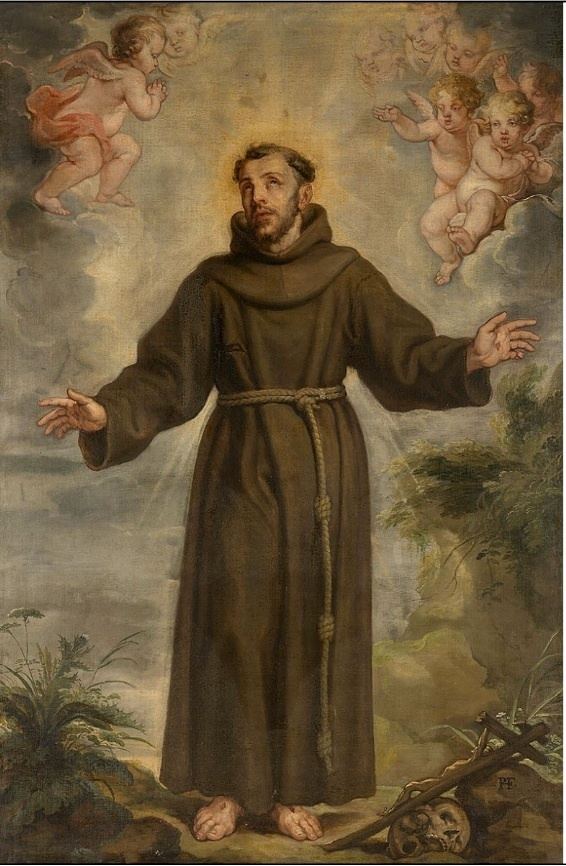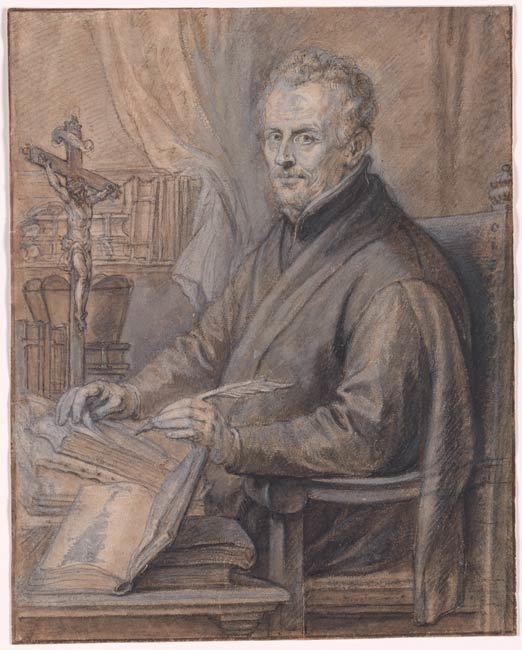Name Philip Fruytiers | Died 1666 | |
 | ||
Artwork Apotheose van de heilige Antonius van Padua | ||
Philip Fruytiers (alternative spellings: Philip Fruijtiers, Philip Fruitiers) (1610 in Antwerp – 1666 in Antwerp) was a Flemish Baroque painter and engraver. Until the 1960s, he was especially known for some miniature portraits in watercolor and gouache. Since then, several large canvases signed with the monogram PHF have been ascribed to him. These new findings have led to a renewed appreciation for his contribution to the Antwerp Baroque.
Contents

Life
Details about his life are scarce. He was the son of Jan Fruytiers and Catherina Vervloet. He is listed as a pupil of the Jesuit college in Antwerp in 1627. No information about his artistic training is available. He became a master of the Antwerp Guild of Saint Luke in 1631–32. He is described in the register of the Guild as an illuminator, painter and engraver.
Between September 1630 and 18 October 1665 he was very active in the 'Sodaliteit van de Bejaerde Jongmans', a fraternity for bachelors established by the Jesuit order.
He was the teacher of Ambrosius Gast (II), Gualterus Gysaerts, Franciscus Fruytiers, Adrian Cockx (1649–50), Wauter Gyssels (1662-63) and Gregoris de Vos (1663–64).
Work
Philip Fruytiers was until the middle of the 20th century mainly known as a miniature painter and portraitist who worked in watercolor and gouache. His most famous miniature, depicting the four children of Rubens and his second wife Helena Fourment with two servants (1638, Windsor Castle, Berks, Royal Collection) is probably the portrait that was mentioned in the inventory of the estate of Rubens in 1641 and on which at the time the price of the frame and glass was still owing. The accepted view of Philip Fruytiers as principally a miniaturist and watercolorist was based partially on the descriptions in the early biographical works by Cornelis de Bie and Arnold Houbraken. Although Cornelis de Bie mentioned that Fruytiers also painted altarpieces, the only known works by his hand until the 1960s were works on paper or vellum. As a result, the established view about the nature of his work was not challenged. In the 1960s this view had to be revised, however, when three large paintings of saints dated 1652 with the monogram "PHF" (in the Royal Museum of Fine Arts Antwerp), which were previously attributed to a hypothetical painter PH Franck, were identified as being by the hand of Fruytiers. The same signature was subsequently discovered on another altarpiece in the parish church in Zundert, Noord-Brabant. This led to the attribution to Fruytiers of other paintings in museums in Brussels, Antwerp and Madrid, and in the parish church of Gistel, West Flanders. Drawings for some of his altarpieces are kept in the Antwerp Stedelijk Prentenkabinet, the Yale University Art Gallery and the Kupferstichkabinett Berlin.
Fruytiers' style is generally much closer to the refinement and delicacy of Anthony van Dyck than to the more monumental art of Rubens. Fruytiers also painted large portraits like that of David Teniers the Younger and group or family portraits such as that of the three children of Rubens.
An expressive portrait drawing of the Jesuit Jan de Tollenaere (Johannes Tollenarius) (Morgan Library & Museum) was a study for an engraving made by Jacob Neefs. Fruytiers was an accomplished engraver and produced several portrait etchings such as those of the Capuchin Innocentius de Caltagirone and the mathematician and astronomer Govaert Wendelen. He made designs for prints included in devotional books and other religious prints by Antwerp engravers such as Cornelius Galle the Younger and Conraad Lauwers
